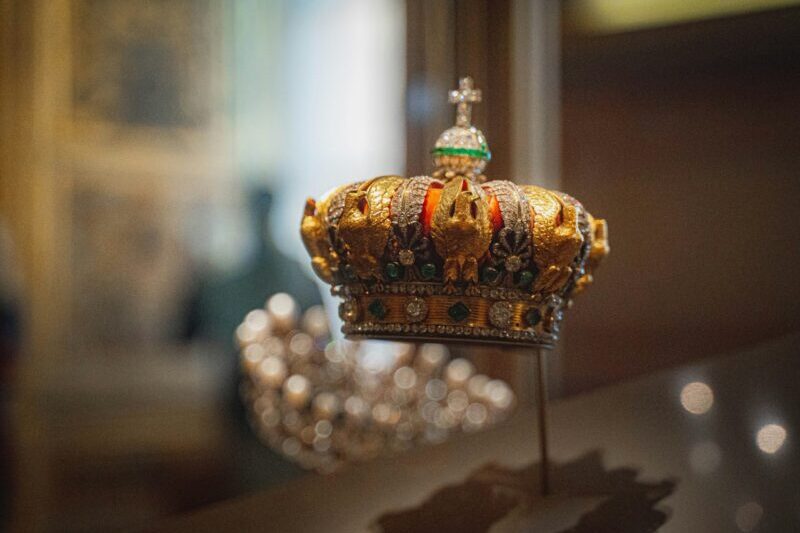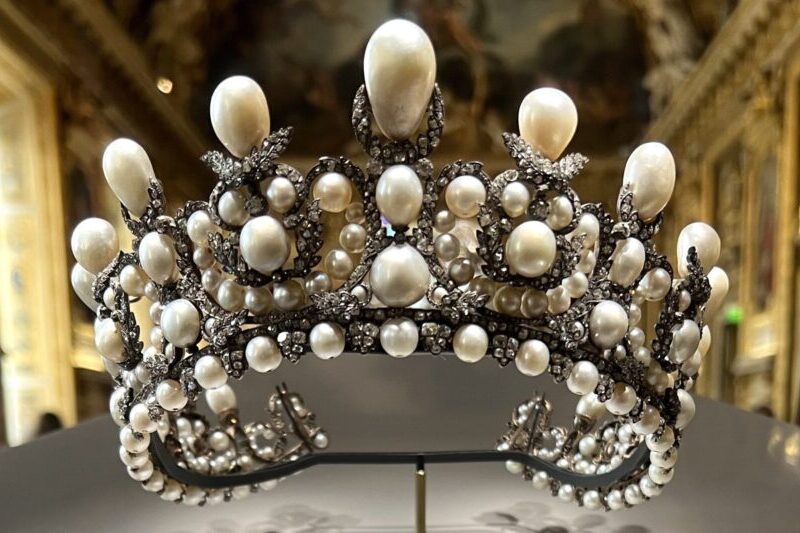In a stunning daylight robbery, a commando-style team of thieves broke into the Louvre Museum in Paris and stole crown jewels tied to Emperor Napoleon Bonaparte and Empress Eugénie. The theft shocked France and the wider world. It also raised urgent questions about security at the planet’s most visited museum.
The Heist Unfolds
On Sunday morning, around 9:30 a.m., four masked men targeted the Apollo Gallery, home to France’s imperial jewels. They reached a second-floor balcony with a furniture hoist known as a monte-meuble. Then they breached a window and moved fast.
Video shows one thief cutting into a display with a handheld saw. Others smashed a second case. Within minutes, the crew grabbed several pieces, including a tiara, a necklace, a brooch, and emerald earrings linked to Empress Eugénie. They fled to waiting scooters and vanished into city streets. Later, investigators found a damaged crown near the gallery, suggesting a dropped or abandoned item during the rush to escape. (MORE NEWS: FBI Probes Hunting Stand Near Trump’s Air Force One Area)
A Commando Team of Four
Police now describe the suspects as a coordinated unit. They wore construction gear to blend in with renovation activity. Two entered the gallery. Two stayed outside as lookouts and drivers. Their timing looked deliberate and precise. They struck as the museum transitioned to opening hours, a moment when attention divides between staff duties and incoming visitors.
Moreover, the thieves brought the right tools: a lift, cutting equipment, and likely glass-rated blades. Their plan hinted at advance scouting and knowledge of the floor plan. Consequently, investigators are examining prior access, contractor movements, and any unusual activity near the Apollo Gallery in the days before the heist.
Why This Theft Matters
The Louvre draws millions each year. Yet these jewels carry weight beyond tourism. They are national symbols. They link modern France to the Second Empire and the legacy of Napoleon III and Empress Eugénie.
Because the pieces are highly recognizable, experts fear the thieves could melt settings or re-cut stones. If that happens, the trail grows cold. The historic objects become raw materials. Heritage turns into anonymous bullion. Therefore, the race to recover the jewels is on.
Security Questions for a Global Icon
Security at the Louvre has faced scrutiny before. Staff have warned about crowding and staffing pressures. Now, this daylight breach magnifies those concerns. Did the thieves exploit maintenance routines? Did equipment left on-site ease access? And did alarm responses meet the challenge of power tools and determined intruders?
In response, museum leaders and cultural officials are reviewing protocols. Expect tighter controls around construction zones, more checks on contractor gear, and faster response playbooks for tool-based attacks. In addition, other major museums will reassess their own vulnerabilities, especially for small, portable, high-value objects.
Political and Public Reactions
National leaders condemned the crime as a humiliation and a shock to cultural identity. Opposition figures pointed to a broader decline in public order. Meanwhile, the Louvre closed for forensic work and an immediate inventory. Technicians collected prints, fiber, and tool marks. They also pulled footage from museum cameras and nearby streets, hoping to map every step of the crew’s approach and escape.
The Historical Stakes
The missing pieces are not merely luxury. They are artifacts of statecraft, ceremony, and image-making under the Second Empire. Empress Eugénie’s jewels embodied power and elegance. They told a story of ambition—artfully cut in diamonds, emeralds, and gold. Their loss is a cultural wound. It weakens the public’s direct connection to a pivotal chapter of French history.

The Investigation So Far
Authorities launched a nationwide manhunt and alerted Interpol. Customs posts and borders received warnings about distinctive gemstones and imperial designs. Detectives are reviewing bike, traffic, and street cameras across likely routes. They also monitor resale channels, both physical and online. Above all, they know time matters. Experts say the first 48 hours often determine whether intact jewels can be found before stones are removed or metal is melted. (MORE NEWS: George Santos a Free Man After Trump Commutes His Sentence)
How Museums Can Respond
Globally, museums face a tough balance: access and awe versus armor and alarms. This heist tips the scale. Expect more human patrols, smarter sensors, and rapid-lockdown procedures. Expect, too, fresh attention to insider risk, contractor vetting, and after-hours equipment control. Because thieves innovate, defenders must adapt—fast and continuously.
What Happens Next
The Louvre is expected to reopen soon, but rebuilding trust will take time. Visitors will want proof that its treasures are secure. Donors will question whether protections truly match the value of what’s inside. And the public will be watching for arrests, confessions, and, hopefully, the return of the stolen jewels.
In the meantime, vigilance matters. Jewelers, auction houses, and collectors should keep an eye out for anything suspicious. Investigators will follow leads and monitor trade networks. Recovering the pieces would mean more than solving a crime — it would show that France can still defend its history.
Final Thoughts
The Louvre robbery is a reminder of how fragile history can be, even in the world’s most secure museums. The thieves relied on speed and precision; investigators now counter with patience and determination. With some luck — and relentless pressure — the jewels might find their way home. Whatever the outcome, this heist shows that protecting the past takes more than alarms and glass cases — it takes constant vigilance.
Cut through the noise. Drown out the spin. Deliver the truth.
At The Modern Memo, we’re not here to soften the blow — we’re here to land it. The media plays defense for the powerful. We don’t.
If you’re done with censorship, half-truths, and gaslighting headlines, pass this on. Expose the stories they bury.
This isn’t just news — it’s a fight for reality. And it doesn’t work without you.


